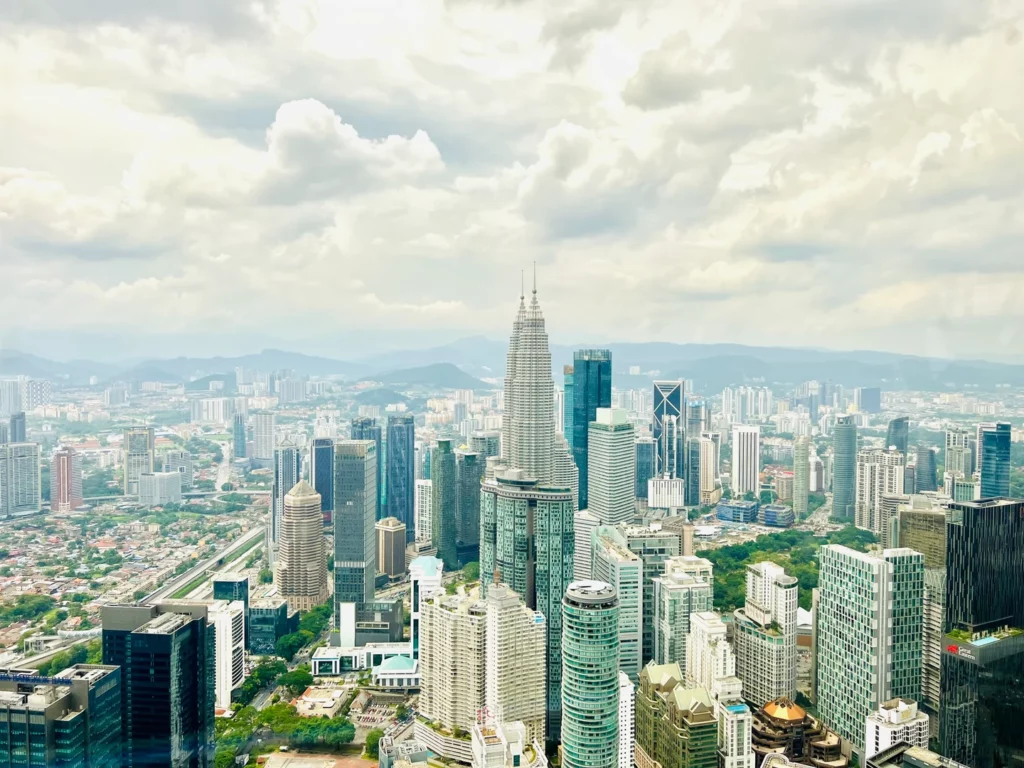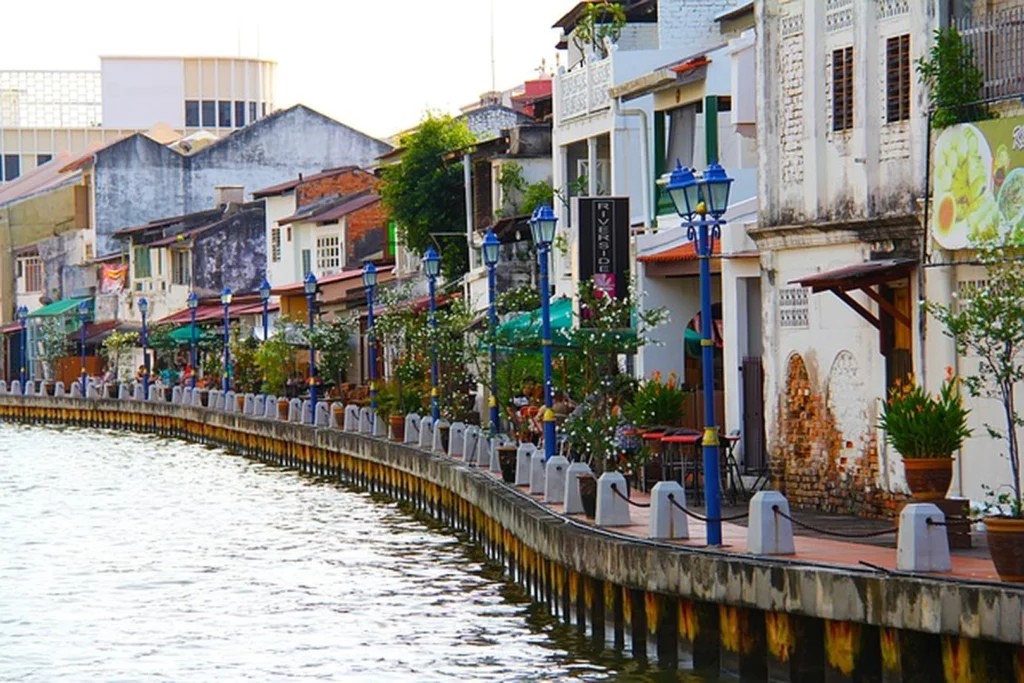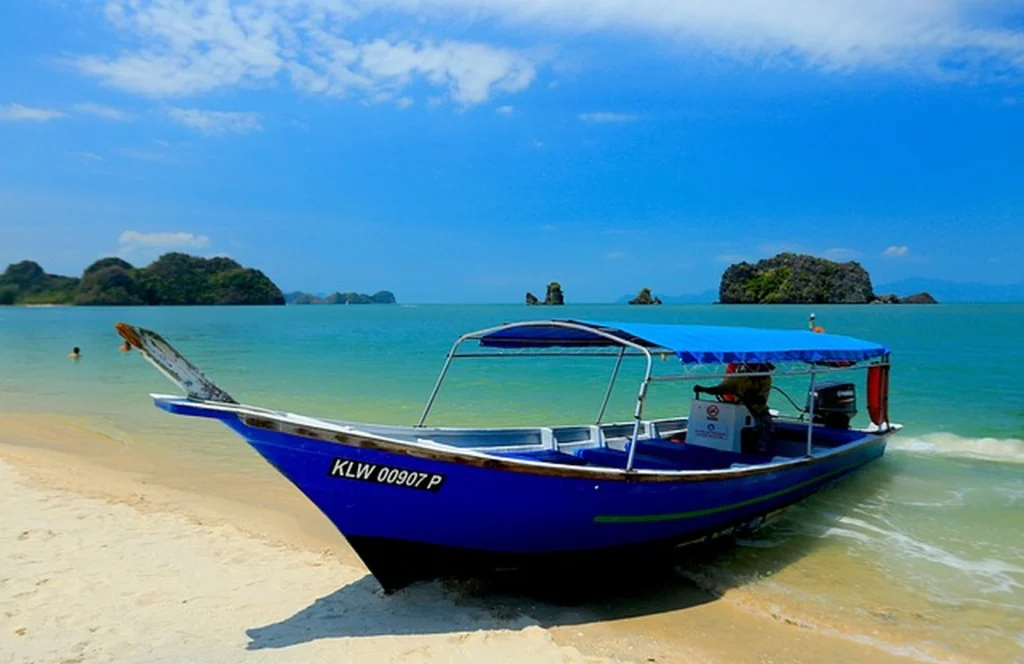
Why Retiring Overseas Makes Sense
With interest rates rising, Americans are finding themselves in a very advantageous position as this now boosts the retirement income they can expect from their fixed-income portfolio. A recent study from the Federal Reserve Board illustrates that there has been a “Pandemic Era Surge” in excess retirements for people aged 65 or older.
Seasoned employees who were not expecting to retire so soon had been furloughed during the pandemic and are now slow to return to work. And those who are within or at retirement age seriously consider retiring early. A large part of this can be attributed to an increased fixed income.
One good thing about rising interest rates is that retirees can finally count on a yield out of their fixed-income portfolio, increasing their retirement income during retirement. This was not possible as little as a year ago when rates were less than 1%, and retirees had to take excess risk on their portfolios to get a reasonable rate of return to retire on. You can now earn over 4.75% on a zero risk FDIC insured High Yield Cash Management account (as of the date of this writing). Before, you had to take on a high-risk junk bond to get a similar rate.
Higher retirement income is excellent news… Right?

Well, the problem is, is that rates are rising because so is inflation. Interest rates are simply catching up to spikes in living costs that we have not seen since the 70s. Also, inflation is exceptionally high and stubborn in areas that most impact retirees, such as services, shelter, and mortgage rates. Should retirees look to relocate to a more ideal destination within the United States, they need to dish out a lot more for rent. And if they choose to buy, as of February 19th, 2024, they are now looking at 30-year mortgage rates north of 7%, higher insurance premiums, and maintenance, which can result in a monthly payment double what they usually would have paid for shelter.
The U.S. dollar remains king. Resulting in a higher standard of living overseas.

Another significant advantage, if U.S. retirees play their cards right, is the consequence of higher interest rates on the value of the U.S. dollar. Higher rates make the U.S. dollar much more attractive compared to other currencies. As a result, your U.S. dollar-denominated retirement income holds greater value abroad than in the United States.
This alone can significantly boost your standard of living and stretch your retirement savings, allowing for the possibility of early retirement and an improved lifestyle. However, seizing these opportunities requires a strategic global financial strategy to capitalize on the inadvertent advantages presented by the global markets.
With an increased retirement income and a stronger dollar in a retirement destination that offers a higher quality of living at a lower cost compared to popular retirement destinations in the United States, retiring overseas becomes an appealing choice for many retirees. To make the most of this opportunity, exploring suitable destinations, gaining comprehensive knowledge about what these places offer, and building a compelling case for stepping out of your comfort zone is essential.

Why Malaysia?
Malaysia is known for its cultural diversity and ability to cater to the needs of expatriates and retirees worldwide. The country has a well-developed infrastructure, with English widely spoken and understood. This makes it easier for retirees to navigate daily life, access healthcare services, and engage with the local community. Malaysians’ warm and welcoming nature adds to the overall experience of living in Malaysia.
Malaysia holds significant historical importance. Positioned as a central trading hub between China in the east and India in the west, it became prime real estate and a major battleground for the Dutch and British. These colonial powers sought to control the lucrative spice trade, which flowed through the Strait of Malacca, a narrow water passageway between the Malaysian peninsula and Sumatra.
The cross-pollination of Chinese, Indian, British, and Arabic influences, along with the Islamization of Malaysia by Arab traders who controlled many of the spice routes, has created a rich multicultural destination combined with the indigenous Malaysians. The food expresses this history with various spices that wake your palate with an explosion of different flavors.
The Top Retirement Destinations in Malaysia

Kuala Lumpur: Southeast Asia’s Cosmopolitan City
Kuala Lumpur has an impressive line of skyscrapers with beautiful architecture that would arguably rival Chicago. As a matter of fact, The Petronas Twin Towers were the world’s tallest buildings in the world until 2004, and the most magnificent buildings that I have ever seen. As Malaysia’s capital, Kuala Lumpur is a big city that offers all the amenities needed for an ideal international living.

Kuala Lumpur is my top match according to the Global Retirement Quiz, which is an excellent way to learn what cities are your ideal international retirement destinations based on your personal preferences and characteristics that matter most to you.
This city boasts a modern infrastructure, excellent healthcare facilities, and a bustling city center with plenty of cultural and entertainment options. The metro is up to European standards. It is swift and convenient to get around in the metro. And if you are feeling a bit lazy to switch trains or get to a metro station, you can easily find a “Grab,” Southeast Asia’s version of Uber, to zip you to your next stop.
Like anywhere on the planet, Kuala Lumpur’s housing costs cater to different budgets, providing retirees with various choices, from affordable apartments to luxurious condominiums. I like to focus on services when comparing cost savings between two retirement destinations for the reasons explained in the introduction. According to Numbeo, the cost of dining out, for example, is 66% lower than in Boca Raton, Florida, and 68% lower than in Charleston, South Carolina, two trending retirement destinations in the United States. Rent is also 87% and 80% lower, respectively.

George Town: Port City Turned Cultural Heritage
George Town was a major port city between the East and West of Malaysia that the British eventually overtook. This has made English its primary language and provides a colonial charm that is much different from the significant metropolis of Kuala Lumpur. The city has “Shop Houses,” homes that double as storefronts. The city represents the 18th-century British era. You can’t find it elsewhere in East and Southeast Asia, making it a UNESCO heritage site.
You can experience international fine dining cuisines with a flair for Chinese and Indonesian fusions. Buildings that have a colonial outer layer with a modern, sleek interior. Georgetown is a multicultural and unique retirement destination.

Many ex-pats choose George Town for its low cost of living. Even when you compare it to Sheridan, Wyoming, a low-cost destination in the U.S. emerging as a top retirement destination, Georgetown smokes it ( according to Numbeo, a site that provides pricing data for international cities for easy comparison). You can get a one-bedroom apartment for approximately 80% lower than Sheridan. Eating out is 70% lower. This stretches out your money so you can retire sooner and for longer.

Melaka: A Fusion of History and Culture
Melaka, or Malacca, is a historic city that showcases a fusion of Malay, Chinese, and European influences. This is a much slower place to live. It is rich in history and culture as it was a trading ground between Arabs, Chinese, and Indians, who make up many of the descendants of Melaka.
Retirees can explore the city’s UNESCO-listed heritage sites, stroll along the scenic riverfront, and indulge in the local Peranakan cuisine. Melaka’s unique blend of history and culture gives retirees a lively and enriching retirement experience.
It is not all slow, either. There is a progressive project to create a city that will ban the use of cash as it will run purely on blockchain technology called Melaka Straits City. Malaysia has a bright prospect for those seeking a small government, low-tax utopia.

Langkawi: A Tropical Paradise for Retirement
Langkawi, an archipelago of stunning islands, is renowned for its breathtaking natural beauty. Retirees can enjoy the island’s white sandy beaches, turquoise waters, and lush rainforests. With various outdoor activities available, including water sports and nature exploration, Langkawi offers retirees a tranquil and picturesque retirement destination.
How To Retire in Malaysia
The Malaysian government has designed several retirement programs, including the Malaysia My Second Home (MM2H) program, which allows non-resident Malaysians to retire and live in Malaysia for an extended period.
Obtaining a Retirement Visa: The Gateway to Malaysia
The retirement visa, issued under the MM2H program, allows individuals to retire in Malaysia and enjoy the country’s many benefits. The application process involves fulfilling specific criteria, including financial thresholds, health checks, and documentation. Retirees must also provide a medical report from their home country, ensuring they are in good health to enjoy their retirement in Malaysia.
Three Financial Planning Steps to Retire in Malaysia

Financial planning is like using Waze or Google Maps to reach your destination. You wouldn’t aimlessly drive to a new location without checking out a map. And when I say map, I mean a digital map. Did you get that boomer? So why would you treat your retirement differently?
Financial planning is done in three broad phases. Find out where you stand financially and where you would like to go, and then evaluate the most efficient path to get there. Now, put the Excel spreadsheet, pen, and pad away. You will be miserable and will never get this done. Instead, use financial planning software.
I believe the best financial planning software on the market is Right Capital. And because we like you and want you to tell all your friends how fantastic our blog is, here is free access through our subscription. This is your “Google Maps” for your ideal retirement destination.
Step 1: Evaluate Your Financial Situation

This is your financial starting point. Take stock of your assets, including savings, investments, retirement accounts, and any other sources of income. Determine your net worth and cash flow to understand your financial capabilities for retirement.
Step 2: Set Retirement Goals

This is where you set how you would like your retirement destination to look on your financial planning software. Or, if you are a stubborn boomer, somewhere on your messy spreadsheet.
Define your retirement goals and the lifestyle you envision in Malaysia. Consider housing, healthcare, travel, leisure activities, and other specific needs or aspirations. Having clear retirement goals will help guide your financial planning decisions.
I highly recommend setting up a budget and tracking it for a while to take it a step further. One thing is to visualize what your lifestyle would be like. Another thing is for your bank account to tell us your lifestyle. If you really want to know the complex answers to a question, follow the money. By tracking your spending, you can translate these costs to your retirement destination to get an idea of what the cost of living would be like for your baseline lifestyle.
Next, ideally with the help of a CFP® Professional, visualize what your lifestyle would look like during your workfree life, and adjust your retirement monthly expenses accordingly. There are great budgeting apps available, which depending on how involved you want to be, can greatly simplify your ability to track spending and better understand what your retirement monthly expenses would look like.
Step 3: Craft Your Financial Strategy

This is where I will implore you to seek professional guidance like a Certified Financial Planner™ practitioner to help you craft a solid financial strategy. This is not one of those things like your broken toilet where you want first to attempt yourself and then call the plumber when you have flooded your house. Retirement is something you want to get right the first time. And not something you want to do twice.
Determine Your Retirement Income Sources
Identify the sources of income that will sustain your retirement in Malaysia. This may include Social Security benefits, pension payments, investment returns, rental income, or other income streams. Assess the reliability and sustainability of each income source.
Generate Retirement Income Tax Efficiently
Consult with a tax professional to understand the tax implications of retiring abroad. Determine how your income, investments, and retirement accounts will be taxed in the United States and Malaysia.
With respect to your U.S. tax treatment, just like there was a tax-efficient way to accumulate your retirement savings (i.e., tax-deductible retirement plan contributions), there are a variety of strategies to distribute your monthly income tax efficiently. This is important because it is not about what you earn but what you keep. Giving up a big part of your income to Uncle Sam may jeopardize the longevity of your retirement savings.
Evaluate Options for Healthcare
Healthcare is going to be a significant component of your retirement expenses. Having a solid healthcare plan to see you through your most vulnerable years is vital (pun intended).
Healthcare is a crucial consideration for retirees, and Malaysia offers access to high-quality healthcare services. Retirees can opt for private health insurance plans tailored to their specific needs, ensuring they have coverage for medical expenses in Malaysia and potentially in their home country. Compare these options to your U.S. health insurance provider that provides coverage overseas.
Create a Budget for Your Cost of Living
Analyze the cost of living in Malaysia and compare it to your current expenses or other destinations you are considering for retirement. Consider housing costs, utilities, transportation, groceries, healthcare, and leisure activities. Create a realistic budget that aligns with your retirement income and goals.
One of the most appealing aspects of retiring in Malaysia is the low cost of living compared to many Western countries. Retirees can enjoy a comfortable lifestyle without straining their finances. From affordable housing options to reasonably priced groceries and transportation, Malaysia offers retirees the opportunity to stretch their retirement income further.
Consider Housing Options
Explore the housing market in Malaysia and determine the most suitable option for your retirement. Whether you rent or buy a property, consider the cost, location, amenities, and any legal or financial considerations involved.
One strategy I find particularly appealing is rental arbitrage. This allows you to leverage U.S. inflation to your advantage. With the United States currently facing a significant housing shortage, rental prices are soaring. If you plan to live abroad part-time, consider renting out your primary home on platforms like Airbnb during the periods you’ll be away. This rental income can offset or even cover expenses such as a mortgage on a foreign real estate investment.
If you plan to purchase a property in Malaysia, engage a reputable real estate agent who can assist you in finding suitable options within your budget and preferences. They can guide you through the process, including the purchase agreement fee, legal fees, and stamp duties. Create an investment account to save money towards a down payment. The earlier you start, the smaller the monthly contributions you will need to make, and more cash flow is freed up to fund your other goals.
Review Legal and Financial Considerations
Understand the legal and financial requirements of retiring in Malaysia. This includes familiarizing yourself with visa regulations, property ownership laws, estate planning considerations, and any financial obligations related to living in the country.
One requirement in Malaysia under the MM2H program is that applicants must place a fixed deposit in a Malaysian bank. This assures the government you will contribute toward their economic development and won’t be a future financial burden. A fixed deposit account ensures financial stability and generates a regular income stream, offering peace of mind throughout retirement.
Another requirement is to show liquid assets over RM $350,000 (About $78,000) and a monthly offshore income of RM 10,000. This is about $2,200 in monthly offshore income earned. With Libre’s Robo Advisory service, you can set this as a financial goal, invest in a professionally managed Roth IRA investment account, and forecast when you have accumulated enough assets to generate this income level tax-free based on expected returns, monthly contributions, and time horizon. Since the IRS allows you only to contribute $7,500 a year (50 or older), it is essential to start contributing as early as possible.
Final Thoughts

Retiring in Malaysia is an exciting choice, offering a favorable environment for retirees seeking an affordable and enriching lifestyle. With the support of the Malaysian government, financial stability through fixed deposits, and a wide range of retirement destinations, Malaysia stands as a prime retirement haven. In your following annual financial plan review, explore these options with your Certified Financial Planner™ professional. If you do not have one, contact one now to get started on a plan today.